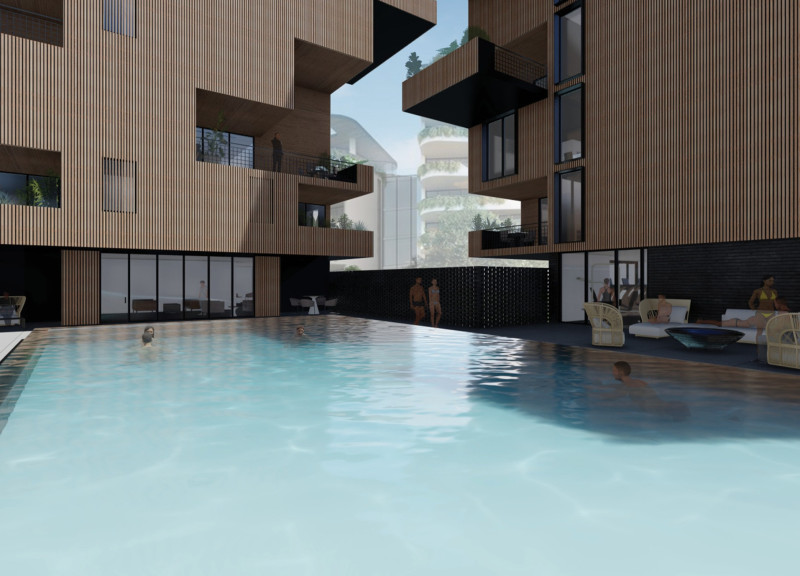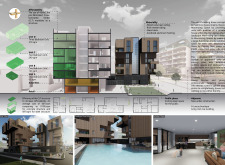5 key facts about this project
The design presents a multi-family dwelling located in a bustling urban area, responding to the critical need for affordable housing. The overall concept centers around pre-fabricated Cross-laminated Timber (CLT), chosen for its efficiency and sustainability. The building features a stacking boxes approach, allowing for flexible unit sizes and optimizing available space in a compact environment.
Spatial Configuration
The layout includes a range of residential options, such as three-bedroom, two-bedroom, and one-bedroom units. This variety accommodates different household types, from larger families to individuals or couples looking for smaller spaces. The stacking boxes design maximizes usable areas, enhancing livability while providing functional spaces for everyday activities.
Community Engagement
Designing communal spaces is a key element, fostering interaction among residents. A public plaza serves as an accessible open area, encouraging socializing and connections. Retail spaces included within the complex provide convenience, making it easier for residents to access services and amenities without needing to leave the proximity of their homes.
Natural Elements
The project prioritizes outdoor spaces by incorporating private areas for each unit. These spaces promote outdoor living and help create a balance between built and natural environments. The design also facilitates ample natural light and ventilation through careful orientation, improving the overall atmosphere within the living spaces.
Material Considerations
The choice of materials includes wood rainscreen siding, brick veneer siding, glass block, and anodized aluminum framing. These materials not only offer a contemporary appearance but also ensure durability and low maintenance. Each element is selected to support the overall vision of a modern, functional living environment.
Attention to both shared and private spaces results in a living environment that is both practical and inviting. The design ultimately reflects an understanding of urban life, creating comfortable homes within the complexities of a city.



















































